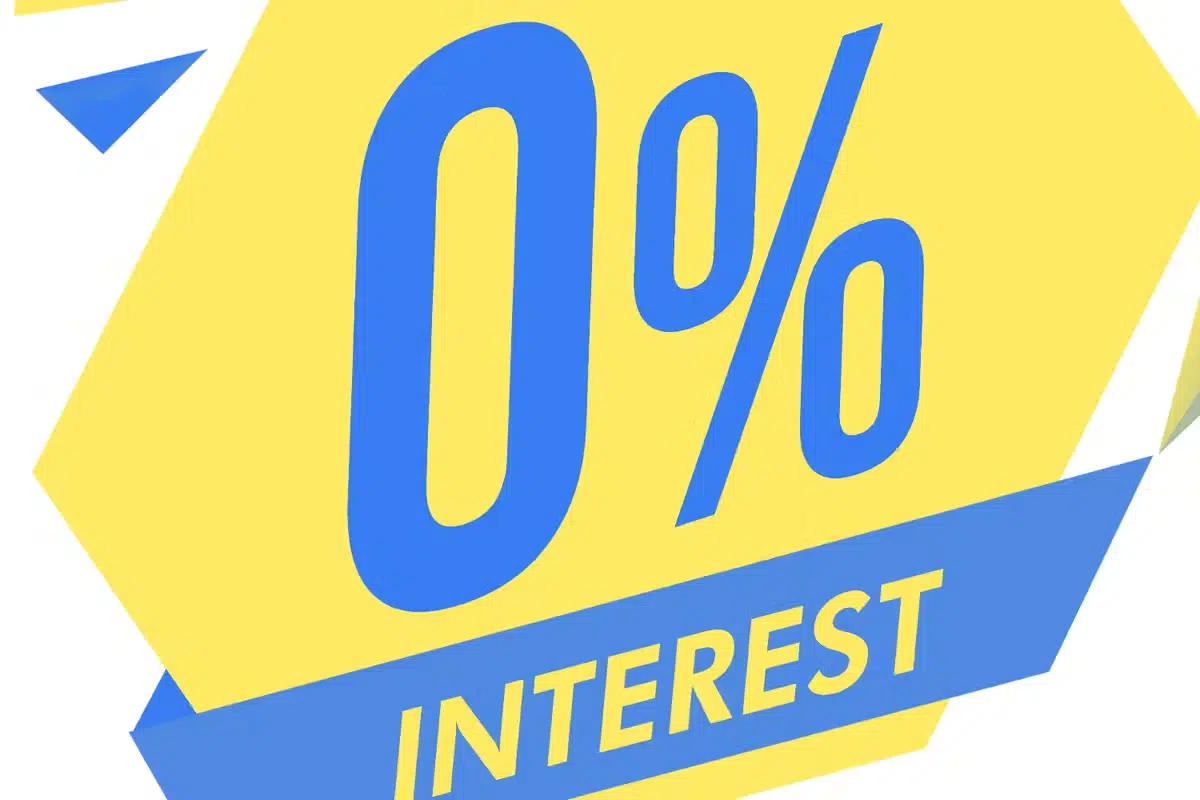
Do Interest-Free Loans Save Money?

Taking on debt for the first time can be an intimidating experience. You’ll be joining millions of people who have a collective $14 trillion in consumer debt in the United States, some of whom have found themselves trapped by significant debt. You might be looking for ways to keep costs and payments low and avoid a mountain of debt. The term “interest-free loan” might have already caught your eye.
But this raises an important question: are interest-free loans truly free for consumers? This are just a few of the questions we are here to answer as we walk through the ins and outs of zero-interest loans.
Fee-Free Checking is Here
Looking for a financial institution that doesn’t nickel and dime you? If you live or work in Texas, join Amplify!
What is an interest-free loan?
We usually don’t think of a loan as costing money— after all, the borrower is the one who is receiving the funds. But borrowing from financial institutions isn’t free money. Banks charge you for borrowing their money in the form of interest on your balance, as well as various other charges and fees.
When some lenders say “free loan”, it’s most likely a consumer loan with no interest. With zero-interest loans, your monthly payments will only go towards paying off the principal balance, which is just the amount that you initially borrowed.
These loans may also have a 0% introductory period, meaning that you’ll be charged interest after a set amount of time (usually between 6-18 months) has passed. Credit card companies are well-known for providing these offers. But there’s often a catch— if you fail to pay your entire balance in a specific timeframe or fall behind on payments, deferred interest will be applied.
With deferred interest, you will be retroactively charged interest on the whole balance. These rates can be much higher than your standard interest rates, meaning you’ll be stuck with a hefty bill to pay.
Not Always Truly Free
Even if you can find a loan where you never have to pay a dime of interest, it doesn’t necessarily mean that the loan is genuinely free. You might end up paying for the loan in other ways, such as various fees and charges. You might also face much higher interest rates if you are late on payments or don’t meet another one of the program’s stipulations.
Many times, zero-interest loans are a tactic to get you interested in a company’s products and services. Once you’re in the door, you are more likely to commit to a purchase than you would otherwise. This is true even if your approval odds for the loan are lower than you’ve been led to believe.
Borrowing without interest also feeds into the temptation to overspend. Given the favorable terms of the loan amount, you might think that it is okay to spend a little more than you usually would. Keep in mind that it’s still better to keep your debt to a minimum, even if you aren’t paying any interest.
Where can you find interest-free loans?
Interest-free loans exist for several different reasons and can be obtained from a variety of sources, including:
- Auto dealers: Car dealerships may offer zero-interest loan programs for financing a vehicle purchase.
- Retail stores: You might find interest-free loans at retail or department stores— especially ones where people make large purchases such as furniture or electronics.
- Medical financing: Medical exams and procedures can be pricey. Some providers have financing plans, while other third-party lenders will loan you money if the healthcare provider is enrolled in the program.
- Non-profit organizations: Some non-profits offer loans for those who temporarily need financial assistance. Typically, these organizations give funds to those who meet specific criteria.
How does your credit score affect interest rates?
Your credit score has to be in good shape for you to qualify for a zero-interest loan. This three-digit number shows lenders how likely you are to repay a loan.
If you have a strong credit history, it is a smaller risk for lenders to let you borrow their money. For a zero-interest loan, most financial institutions will want to see a credit score of at least 720.
Having a good credit score is necessary any time you apply for credit, whether it’s for a zero-interest or traditional loan. There are several actions you can take to improve your creditworthiness.
- Open up a credit card. It may seem counterintuitive, but you can build your credit by opening up a credit card. Research the various credit card providers and card options before you fill out the paperwork. Find one that has the lowest rates, low or no fees, and reasonable limits. If you don’t qualify for traditional credit cards, a secured credit card is an excellent way to start building your credit history.
- Pay off the balance each month. If you open a credit card but then start to rack up debt, your credit score will suffer. To get the maximum benefit for your credit history, you must pay off the balance every month. Best of all, if you pay off your balance every month, you won’t pay any interest on that balance. Loan repayment is one of the most important factors in protecting your credit score.
- Pay all of your other bills on time. Some credit reporting agencies look at your utility payments and your overall credit history. This means that you can improve your score by paying your ordinary bills on time as well.
- Don’t co-sign for other people’s credit cards. You may be asked to be the co-signer on the credit card application of a friend or family member. While you may think there’s no harm in co-signing, it can have lasting consequences on your credit. If your friend or relative is not able to pay their bills on time, you could wind up with the balance.
By having a good credit score, you can qualify for better interest rates and terms on things such as home mortgages and personal loans down the line.
Be Wary of the Zero Interest Debt Trap
Zero interest, whether it’s a loan or a credit card, can be incredibly appealing—especially if you’re transferring other debt to this new credit source.
However: if you don’t know for sure that you can make the payments on time and every month, it’s best to wait on transferring that debt. If you can’t make regular payments, you may find yourself in a worse position.
It may also be tempting to use a 0% card for the entire period without paying more than the minimum—but at the end of 12 or 16 months, the entire balance will be due. Can you pay that off? If not, you’ve landed in another debt cycle. You can’t count on another 0% offer to be available to transfer this debt again—these offers can vary widely, depending on the current economy and competitor offerings.
Read the Fine Print
Before taking out any loan, it’s crucial to understand what you are getting yourself into. Remember that interest-free loans may not always be as good as they sound, so be sure to read all of the terms and conditions thoroughly. An interest rate that saves you a little money now might end up costing you even more down the line.
Become an Amplify Member
Every Amplify account holder enjoys fee-free deposit banking. That means no overdraft, maintenance, or other banking fees on checking and savings accounts.


